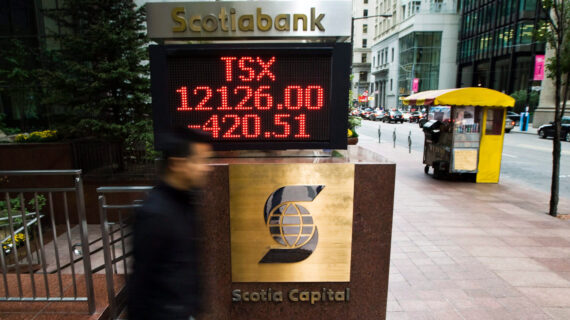The short-term societal shift brought about by the COVID-19 pandemic has been profound. Even aside from the major imposition of lockdowns, we’ve become accustomed to wearing masks everywhere we go, doing business virtually and ordering takeout rather than eating in restaurants.
And as vaccines roll out across the country, reaching an ever-growing majority of Canadians, the remnants of the pandemic that will be more than just temporary oddities are starting to come into focus.
For two of these trends, like the massive drop in birth rates and the housing shortage, the problem was already there, but the pandemic put it into hyperdrive. The supply chain crunch, which saw empty shelves lining our stores, was a hiccup in a global supply system that has drawn mostly positive reviews for decades but may be ripe for improvements.
Here are some ways the pandemic may permanently change Canada.
The baby bust
When lockdowns were imposed last year, there was some initial speculation that it would lead to a baby boom. After all, people are locked inside together. It was inevitable, right?
But human nature isn’t so simple. In times of widespread uncertainty, we’re far more inclined to put off having children, and when we postpone having kids we tend to have fewer of them.
Writing at the Institute for Family Studies in March of 2020, Lyman Stone argued that births were going to plummet, citing data from disasters going back two centuries. Events that cause a lot of deaths, also cause fewer births, argued Stone.
Stone’s prediction was bang-on.
The early numbers from British Columbia show a staggering decline in births in the first quarter of this year, wrote John Ibbitson, the Globe and Mail’s writer at large, and Darrell Bricker, the CEO for Ipsos Public Affairs. Just 8,908 babies were born in B.C. in the first three months of this year, which is an 18 percent drop.
This pandemic baby bust, which has increasingly been showing up in official statistics, is actually the culmination of a decades-long trend in many western countries. And get ready for this to be a dominating issue across the world over the next century.
The situation is especially stark in China. According to the New York Times, China’s population is expected to fall from 1.41 billion people to 730 million by 2100. In that scenario, China would have as many 85-year-olds as 18-year-olds by the end of the century.
On the Move
Thanks to a surge in remote working and an increasingly crazy housing market, the pandemic has sparked a migration and people are moving out of the cities.
The trend was already apparent by the end of 2020.
In its year end outlook in December, Re/Max saw significant relocation happening in the real estate market, with unprecedented sales in suburban and rural parts of Canada. That trend has continued.
Speaking to Bloomberg last week, Finance Minister Chrystia Freeland said she has been keeping an eye on the situation.
“We have seen actually, during Covid, a lot of Canadians moving to smaller towns, to different parts of the country. There’s been a real boom in Atlantic Canada, for example,” said Freeland. “We’ll have to see what happens with workplaces post-Covid.”
The relocation trend is driven by two features of the pandemic. With many companies embracing remote work, employees don’t necessarily have to be in the same city as their employer. And with the housing market being charitably described as “madness” right now by normally buttoned-up bankers, Canada’s most populous cities are even less affordable. Interest rates are low and the pandemic’s recession has been highly stratified between low income and high income people.
A persistent trend over the last year is that job losses have been to low-paying jobs, while hundreds of thousands of high-paying jobs have been added to the economy. Canadians who were able to keep their jobs and work from home have saved money over the last year on commuting and, at times, daycare.
That means that a segment of relatively wealthy Canadians are sitting on a pile of cash, while interest rates bottom out. On top of that, they longer have to go into the office.
So, if the choice is between a ramshackle million-dollar home in Toronto or a house with an ocean view in New Brunswick for $359,000, can you really blame them?
The Supply Chain Crunch
The grocery stores provided some of the most striking images in the early days of the pandemic. We saw people loading their carts with massive packages of toilet paper, empty shelves due to supply shocks and long lines winding around the building as the virus provoked capacity limits on stores.
Those empty shelves and product shortages that still persist today may have spooked retailers into reimagining their entire supply chain.
“With the new understanding that retailers could benefit from a shortened, local and potentially more secure supply chain, governments and industry associations are increasingly incentivizing regional production through both guidance and funding programs,” argues a new report from the Brookfield Institute.
These companies are also required to trace their items all the way through the global supply chain to satisfy regulatory requirements and make product recalls possible. With those costs ballooning, shorter supply chains will only become more attractive.
Consumer preferences may be leading this way anyway, with more people looking for local products, the report says.




